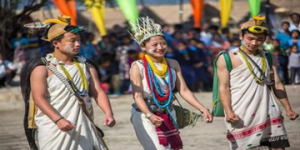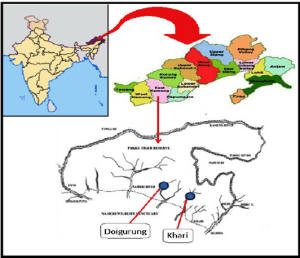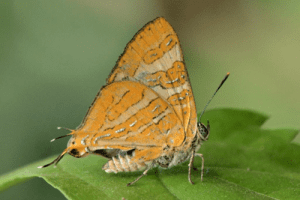ARUNACHAL PRADESH’S PAKKE PAGA HORNBILL FESTIVAL
TAG: GS 1: ART AND CULTURE
THE CONTEXT: The 9th edition of the Pakke Paga Hornbill Festival (PPHF) is scheduled to take place at Seijosa in the Pakke Kessang district from 18th to 20th January, 2024.
EXPLANATION:
MORE ON THE NEWS:
- The first-ever PPHF was held on 16th to 18th January 2015, with the aim of recognising the efforts of the Nyishi hunters-turned-conservationists of hornbills.
- It was declared as a state festival in 2019 by then Chief Minister Pema Khandu.
- The 2024 theme of festival is Domutoh Domutoh, Paga hum Domutoh. It means to ‘Let Our Hornbills Remain’ in the Nyishi language.
- This year’s festival aims to underscore the critical need for preserving these iconic birds.
- The festival includes activities ranging from bird-watching, butterfly walks, bear walks, hornbill roost site visits, literary competitions to many more.

OBJECTIVES OF THE FESTIVAL:
- The festival aims to recognise the role played by the Nyishi in conserving hornbills in PTR. The Nyishi had formerly hunted hornbills and used their bills to craft traditional headgear. They had later turned hornbill conservationists.
- Other objective was to raise alternative sources of income for the region and to create awareness in the rest of India about the wonders of PTR and its surrounding areas.
- The festival epitomizes a deep connection between man, nature, and society.
- It has a positive impact over the years in uniting people from diverse backgrounds to combat pollution, protect wildlife, and address environmental degradation.
PAKKE TIGER RESERVE:
- Pakke Tiger Reserve is located in the East Kameng district of Arunachal Pradesh.
- It is surrounded by the Tenga Reserve Forest to the North, Doimara Reserve Forest on the West, Nameri National Park and Tiger Reserve on the South and some agricultural land as well as Papum Reserve Forest on the East.
- The landscape has high species diversity and endemicity as it forms the transition zone between the Indian and Malayan eco-regions.
- Four species of the birds Wreathed, Great Indian, Oriental Pied and the endangered Rufous-necked are found in the reserve.
- The area is also home to the Nyishi, the largest tribal group in Arunachal Pradesh.

NYISHI TRIBE:
- The Nyishi are the largest ethnic group in Arunachal Pradesh in north-eastern India.
- In Nishi, their traditional language, Nyi refers to “a man” and the word shi denotes “a being”, which combined together refers to a civilized human being.
- They are spread across seven districts of Arunachal Pradesh: Kra Daadi, Kurung Kumey, East Kameng, West Kameng, Papum Pare, parts of Lower Subansiri and Upper Subansiri. They also live in the Sonitpur and North Lakhimpur districts of Assam.

- The Nyishi language belongs to the Sino-Tibetan family, however, the origin is disputed.
- Polygyny is prevalent among the Nyishi. It signifies one’s social status and economical stability and proves handy during hard times like clan wars or social huntings and various other social activities.
- They trace their descent patrilineally and are divided into several clans.

